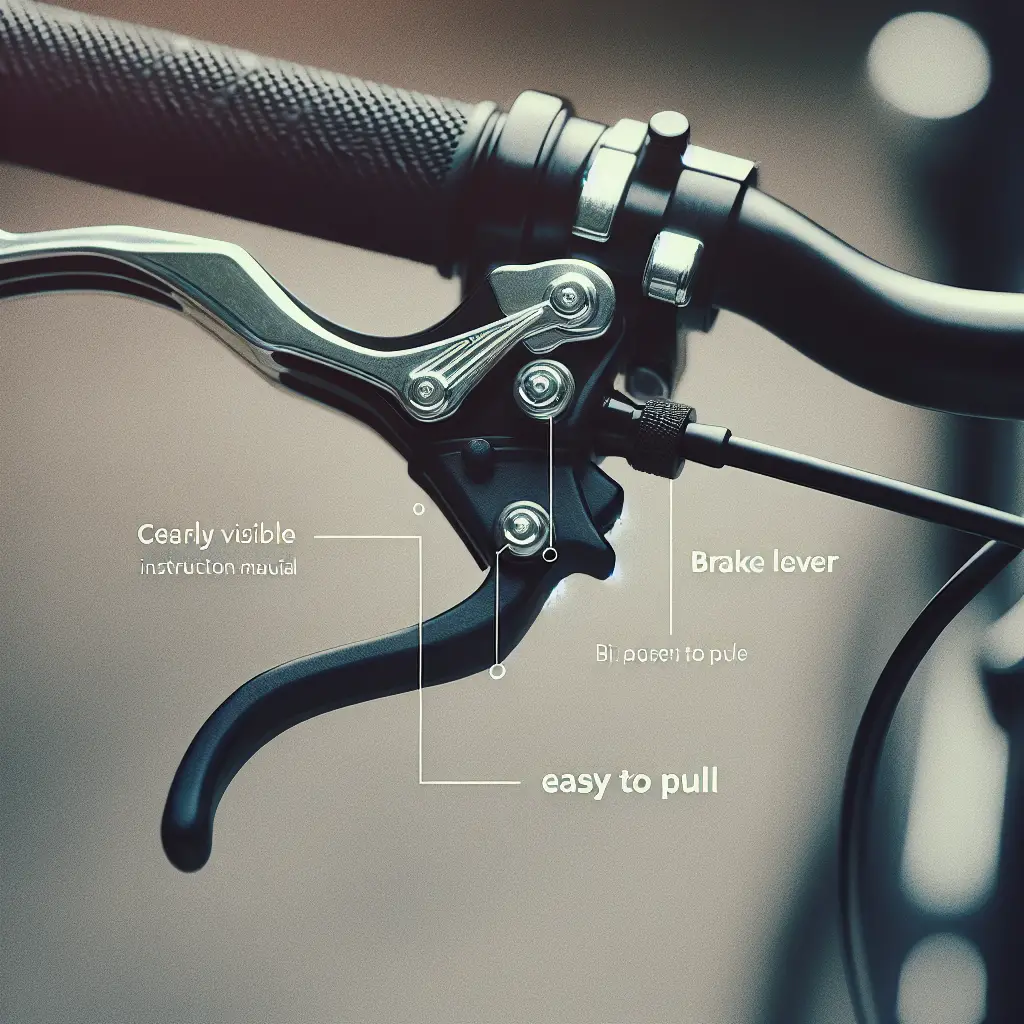How to Make Bike Brakes Easier to Pull
As a cycling enthusiast, you know the importance of a responsive braking system for safety and performance. However, stiff brakes can really take the joy out of your ride and even lead to risky situations. Today, we’ll delve into how to make those bike brakes easier to pull, and ensure a smoother, safer cycling experience.
Assess the Situation
Before diving deep into adjustments, it’s crucial to understand why your brakes may require additional force. The common culprits usually include worn-out brake pads, improper cable tension, or a lack of lubrication.
1. Inspect and Replace Brake Pads
Your bike’s braking power significantly relies on the condition of the brake pads. Worn pads can make braking difficult, since more lever force is necessary to achieve the same stopping power. Sheldon Brown’s Guide to Brake Pads offers a comprehensive understanding of how different types and conditions of brake pads can affect performance. Inspect your brake pads for wear, and if they’re past their prime, replace them with high-quality ones compatible with your bike.
2. Adjust Brake Cable Tension
A common reason for hard-to-pull brakes is incorrect brake cable tension. Too much tension and the brakes might not fully release, too little and you’ve got too much slack when pulling the lever. The balance here is key. Park Tool’s Guide on Brake Systems provides detailed instructions on how to adjust brake cables to the optimal tension for your riding style.
3. Lubricate Brake Components
Friction can be a real adversary when it comes to brake lever ease. Regularly lubricating the brake cables and pivot points of the brake levers can significantly reduce resistance. Use a suitable bike-specific lubricant for this purpose. Always avoid getting lubricant on the brake pads or rim, as this can severely impair braking performance. The Bicycle Maintenance Guide covers the best practices for proper lubrication to maintain optimal performance of your bike’s brake system.
4. Consider Brake Lever Ergonomics
Sometimes, the difficulty in pulling brake levers isn’t due to the brake mechanism but the ergonomics of the levers themselves. Adjustable levers can be fine-tuned to fit your hand size and finger reach, resulting in a more comfortable and easier pull. Investigation into ergonomic lever options and adjusting for personal comfort can make a world of difference. You can learn more about ergonomic principles in cycling on Cycling Weekly.
5. Check for Wear and Damage on Brake Cables and Housing
Over time, brake cables and housing can wear out or become damaged. Frayed cables or cracked housing impede the smooth operation of brake levers. It’s imperative to regularly check these components for any signs of wear and replace them when necessary. Here, the reliability of the sources for replacement parts is crucial. Turn to reputable manufacturers to ensure you’re using top-quality components.
6. Bleed Hydraulic Brakes
If your bike has hydraulic brakes and they’ve become hard to pull, it may be time to bleed them. This process involves removing trapped air bubbles from the hydraulic fluid, which can cause a spongy feeling in the brake levers. Although slightly more technical, bleeding your brakes can restore their responsiveness and make them easier to pull. SRAM’s Bleeding Edge Technology provides a step-by-step process to perform this task efficiently.
7. Upgrade to a More Efficient Brake System
If after trying all these steps, your brakes still feel hard to pull, it might be an indication that your brake system isn’t up to par. Investing in a higher-grade brake system that’s designed for ease of use and performance could resolve your issues. Speak with a professional at your local bike shop for recommendations tailored to your bike and riding habits.
Final Thoughts
Making your bike brakes easier to pull not only enhances your riding experience but also keeps you safer on the road or trail. Regular maintenance and fine-tuning of your brake system can go a long way in ensuring everything operates smoothly.
Remember, safety is paramount when it comes to biking, and that starts with brakes you can rely on – effortless and reliable each time you squeeze the lever. Don’t ignore stiff brakes; address them with these steps to ensure a safe and enjoyable ride.
Efficient braking is not just a matter of convenience; it’s essential for rider safety. Therefore, don’t hesitate to consult with a professional mechanic if you’re uncomfortable performing any of these adjustments yourself. Always prioritize safety and proper function over temporary makeshift solutions.
By following these expert tips and combining them with routine check-ups, your bike brakes should remain in top-notch condition, ensuring that every ride is as pleasurable as it is safe. Whether cycling through the bustling city streets or adventuring off-road, rest assured that responsive brakes are within reach for every cyclist.
Remember, a well-maintained bike is a safe bike. Happy cycling!

